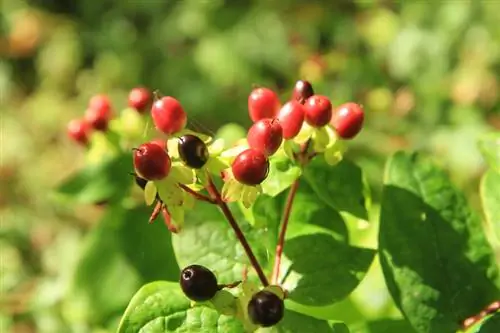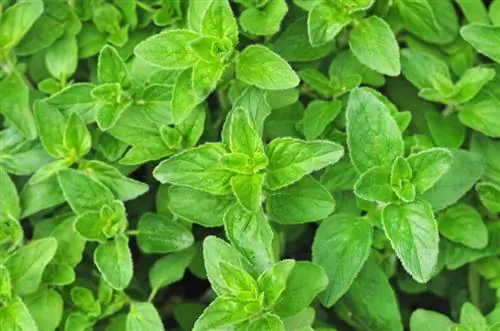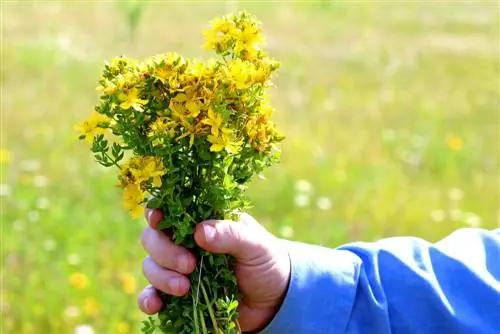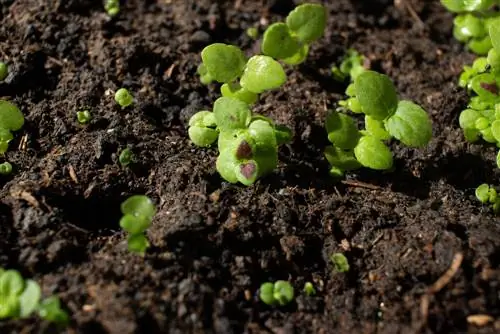- Author admin [email protected].
- Public 2023-12-16 16:46.
- Last modified 2025-06-01 06:02.
A blood-red juice containing lots of essential oils flows from the leaves and flowers of St. John's wort when they are pressed. But it's not just these parts of the plant that are interesting. The seeds can also be of value. But what do they look like and what can you use them for?

What do St. John's wort seeds look like and how are they used?
St. John's wort seeds are small, oval to oblong, medium brown to black brown and have a smooth surface. They are primarily used to propagate the plant and can be sown in spring, although they are light germinators and require very little soil.
When are the seeds ripe and ready to be collected?
First, the flowering period ends, which usually lasts from the end of June to August. The berry-like fruits ripen in late summer. They are usually ripe towards the end of September/beginning of October.
The fruits can be harvested in autumn. It is then advisable to air dry the fruit. When dry, the seeds contained can be easily removed. The seeds are practical for propagating St. John's wort.
External and internal characteristics of seeds
The seeds contained in the berry-like fruits don't look particularly spectacular. Here are their characteristics:
- with 1 mm and less they are small
- oval to oblong shaped
- medium brown to black brown colored
- smooth surface
- non-toxic
Sowing the seeds - how does it work?
There are no other common uses for the seeds than sowing. Normally sowing is uncomplicated and successful. If you want to sow the seeds, you should do so either as soon as the seeds are ripe or in spring.
It is ideal to sow the seeds in spring from around March to April. Sowing seeds later in the year delays the flowering period until the next year. This is what you should know about sowing:
- sow directly or preferentially - both are possible
- Seeds germinate in the light - do not or barely cover them with soil
- Germination time: 2 to 4 weeks
- Germination temperature: 18 to 25 °C
Tip
Since the seeds are quite tiny, it is advisable to mix them with a little sand before sowing and only then spread them widely.






